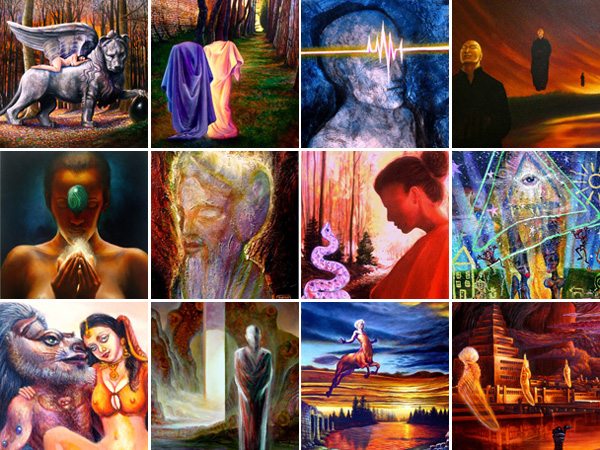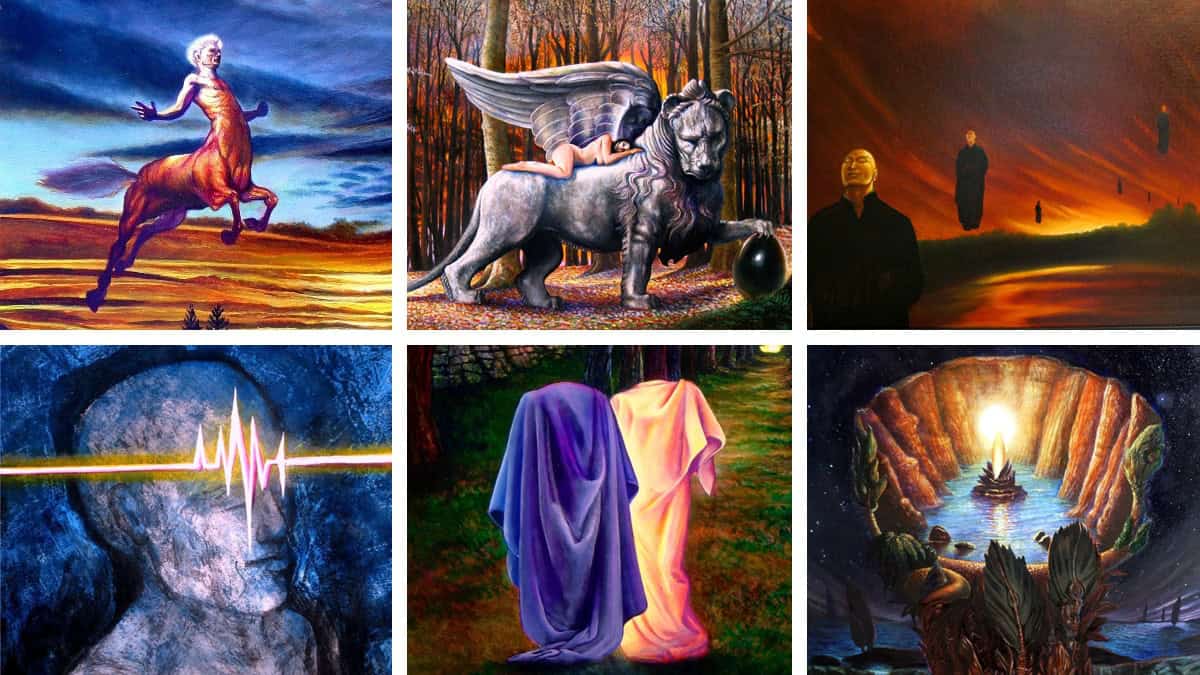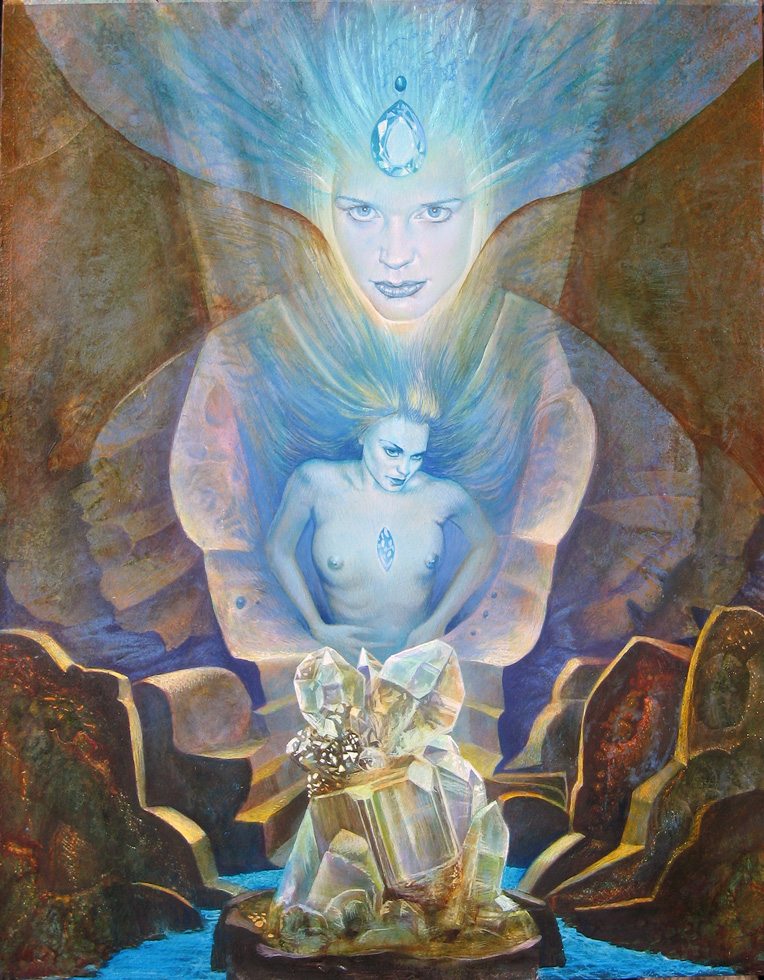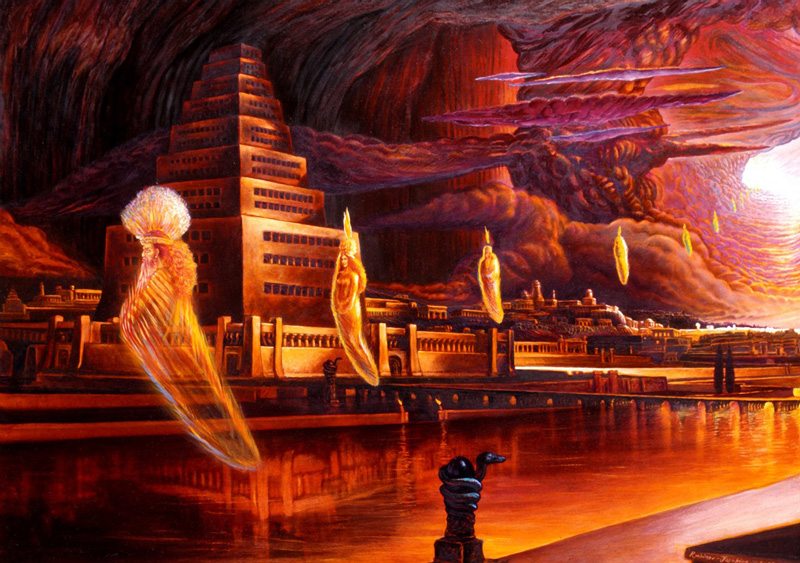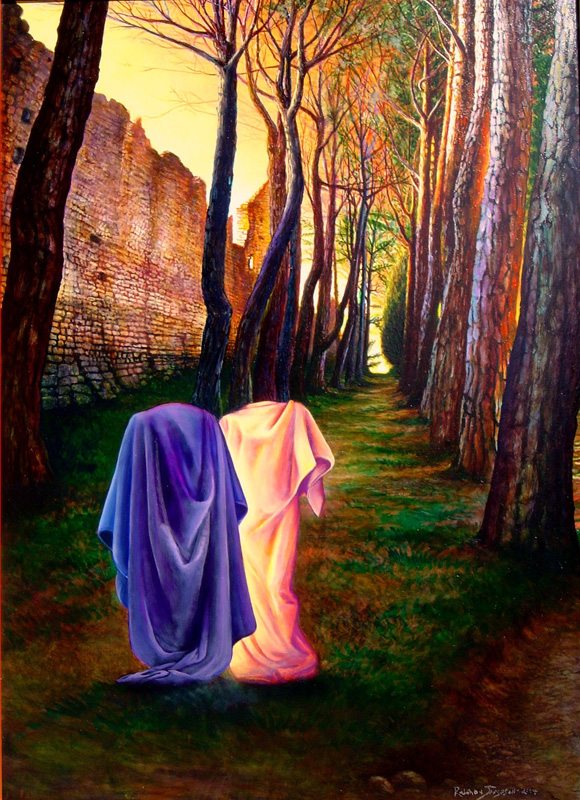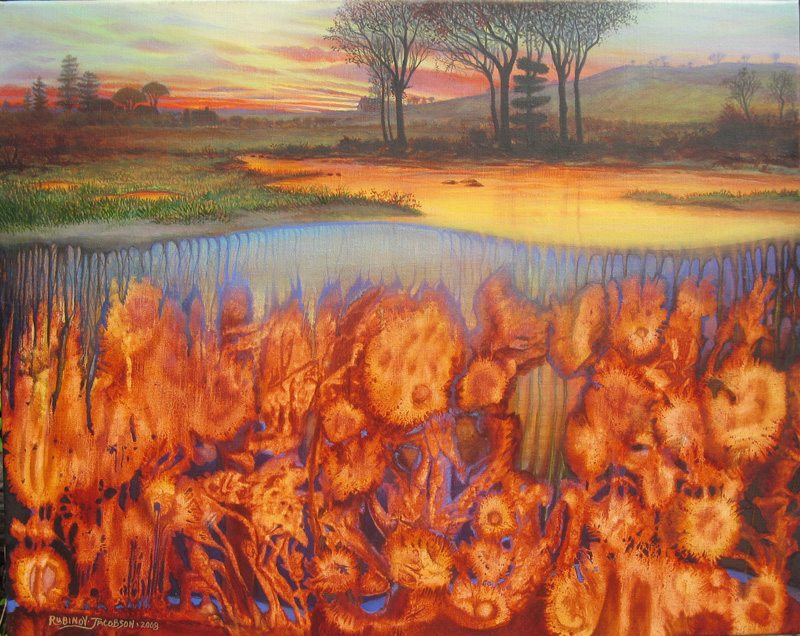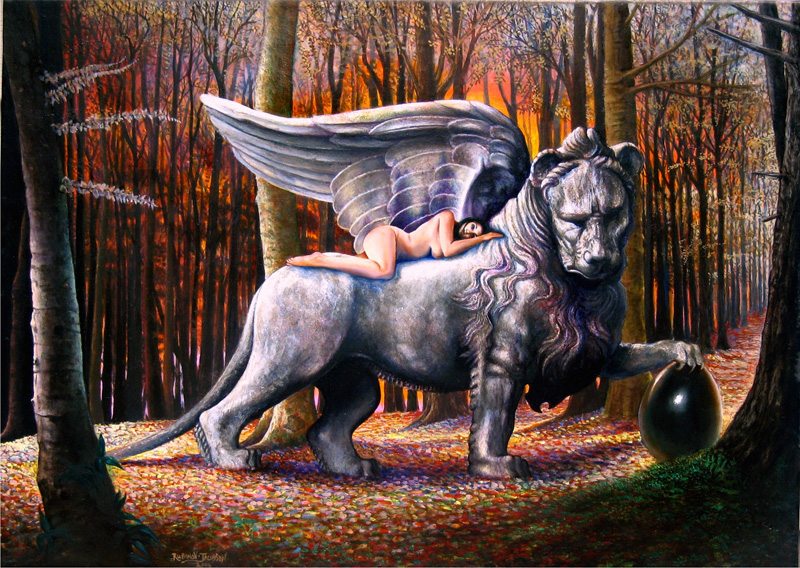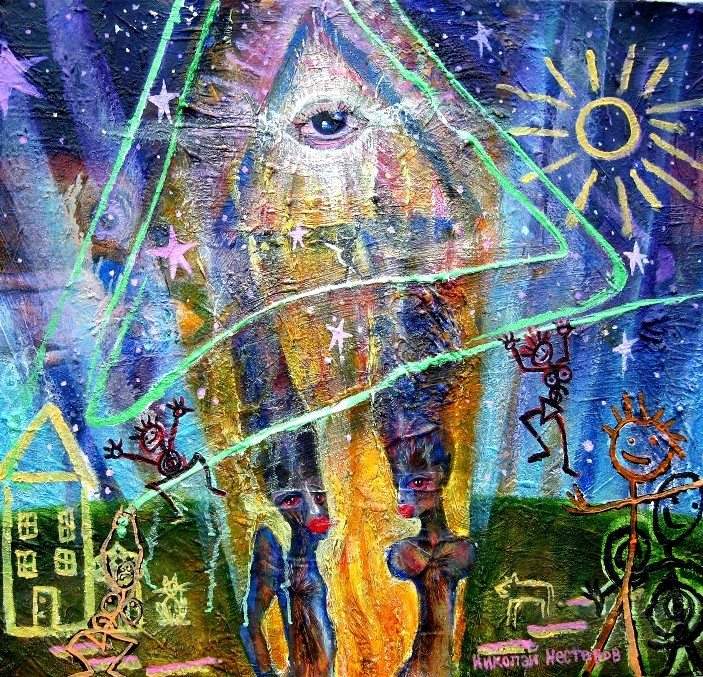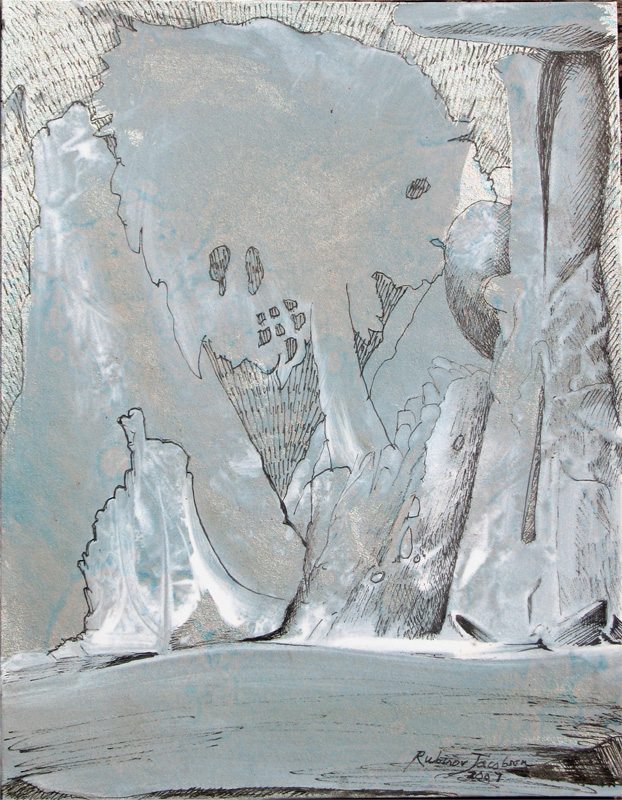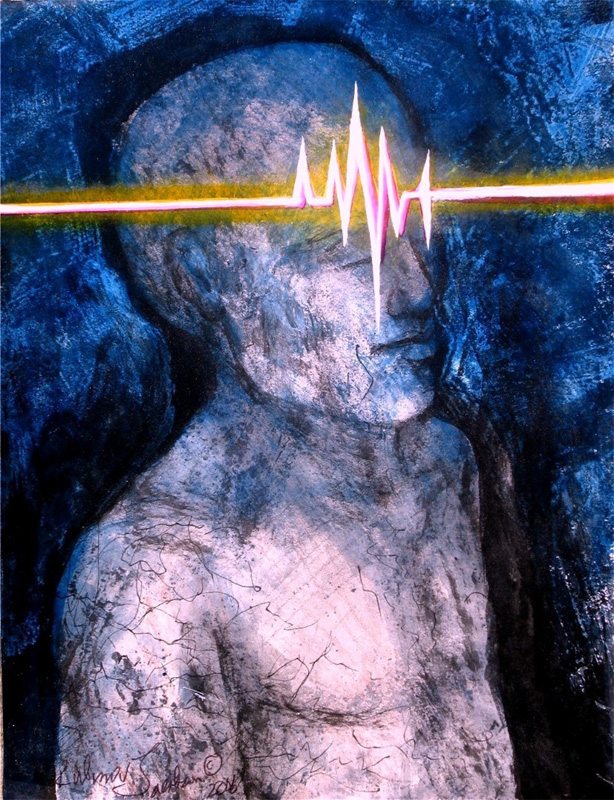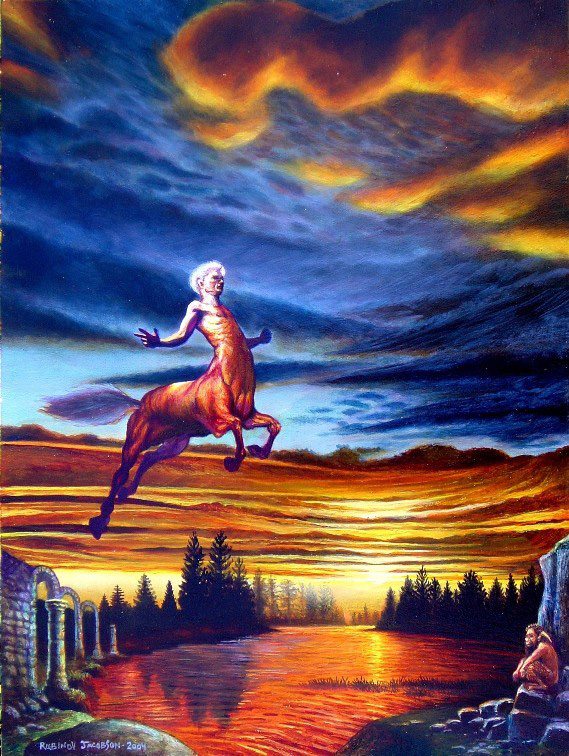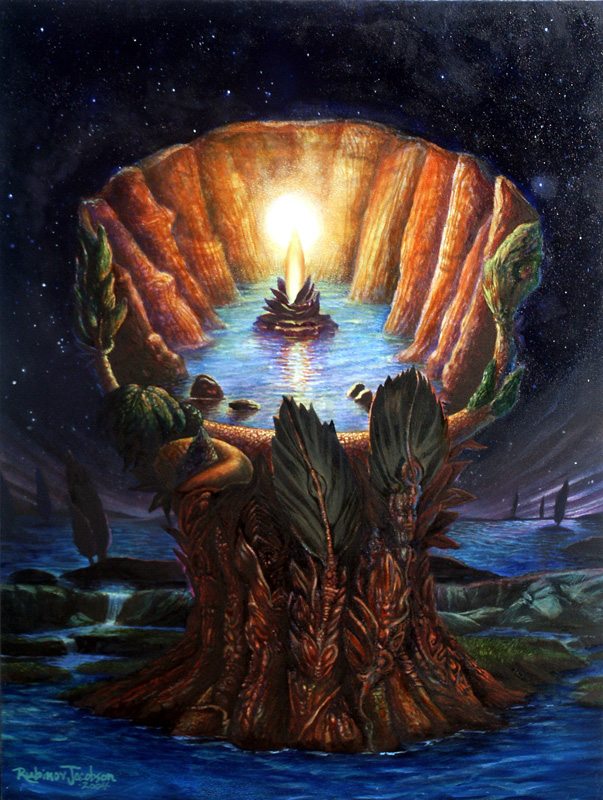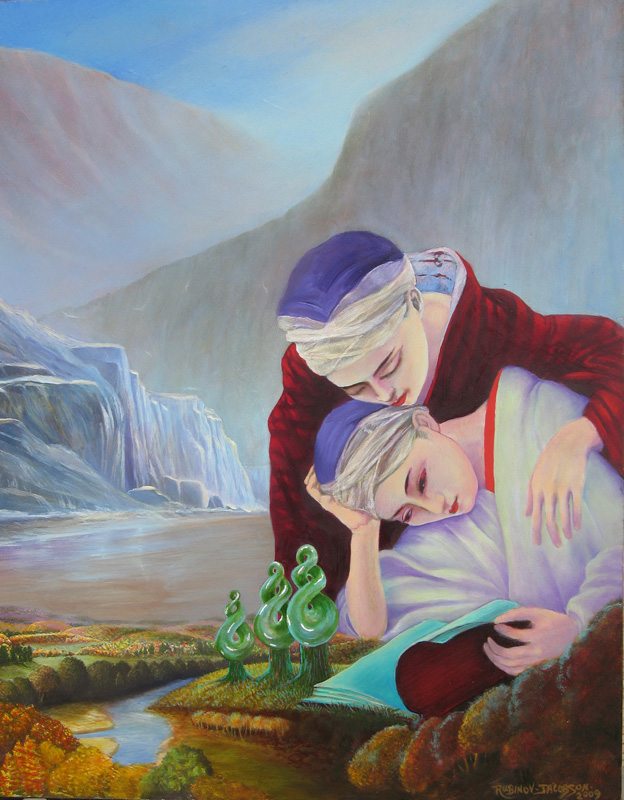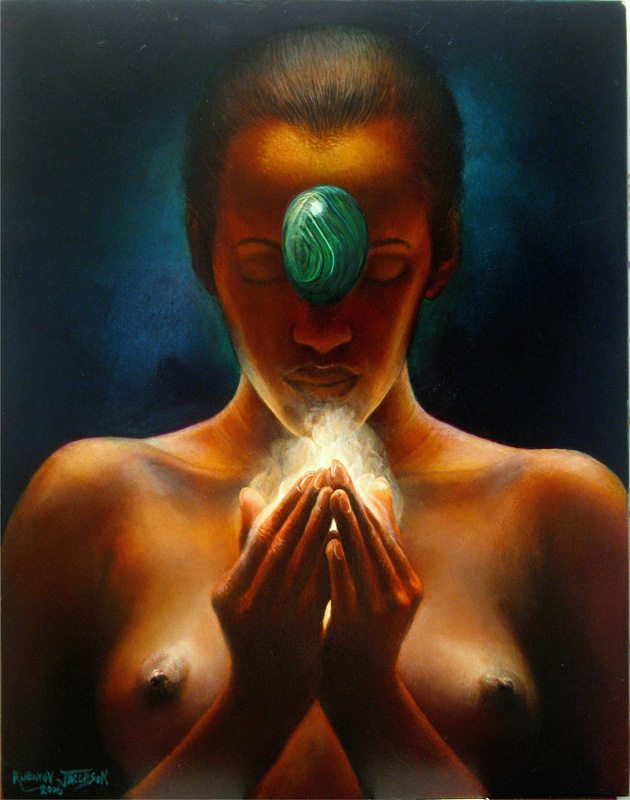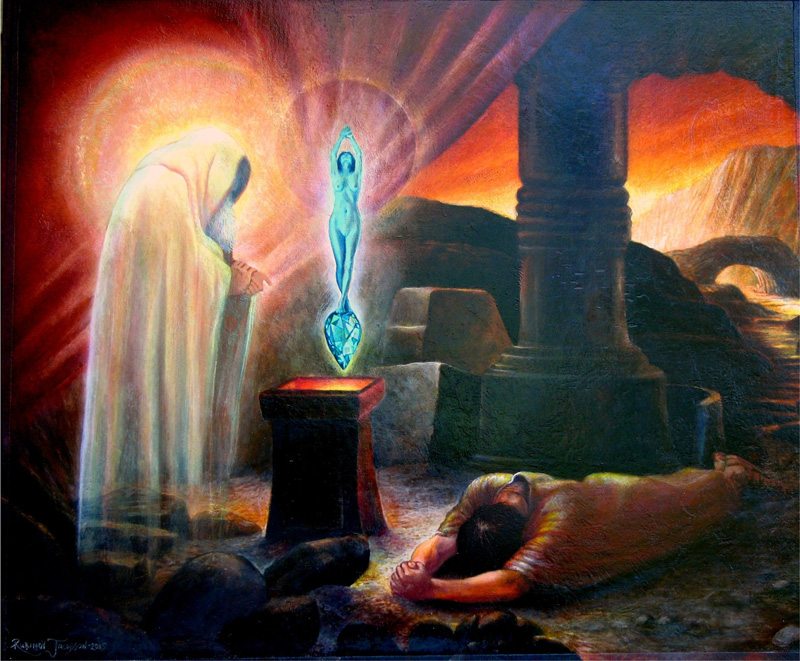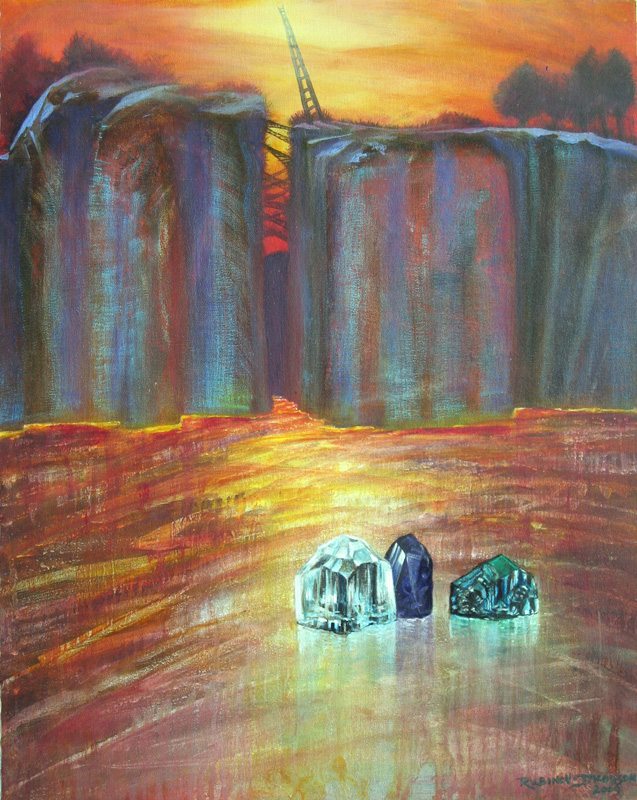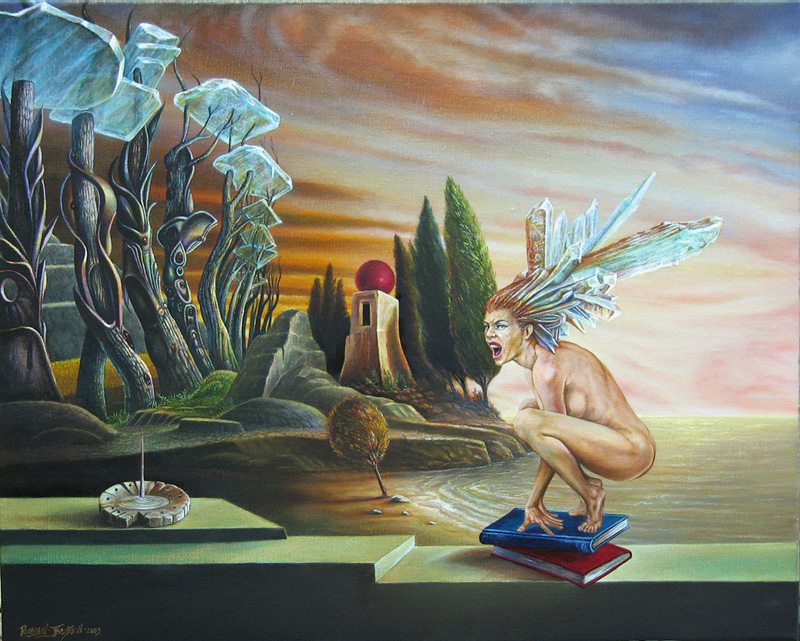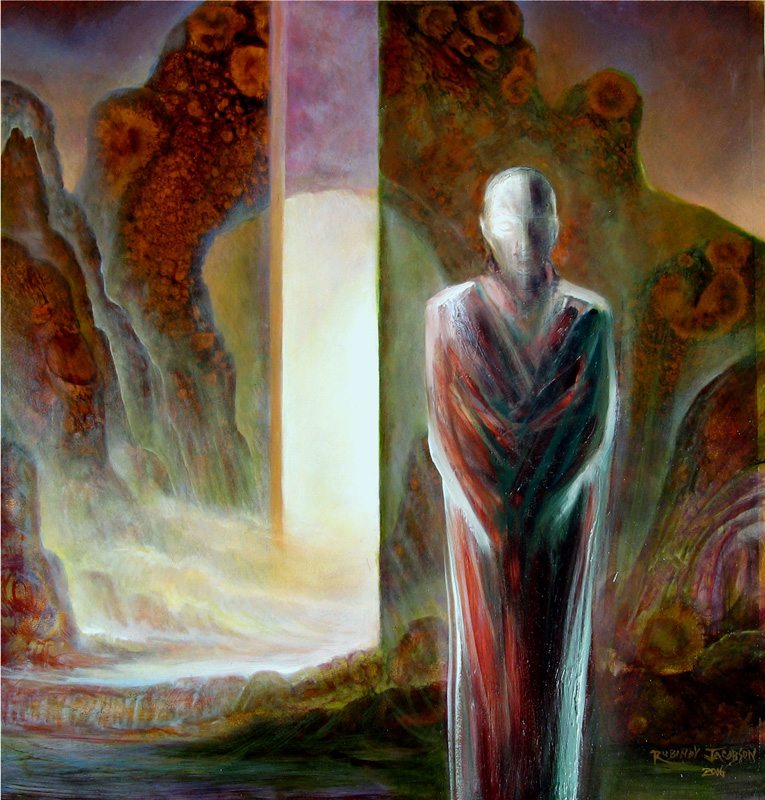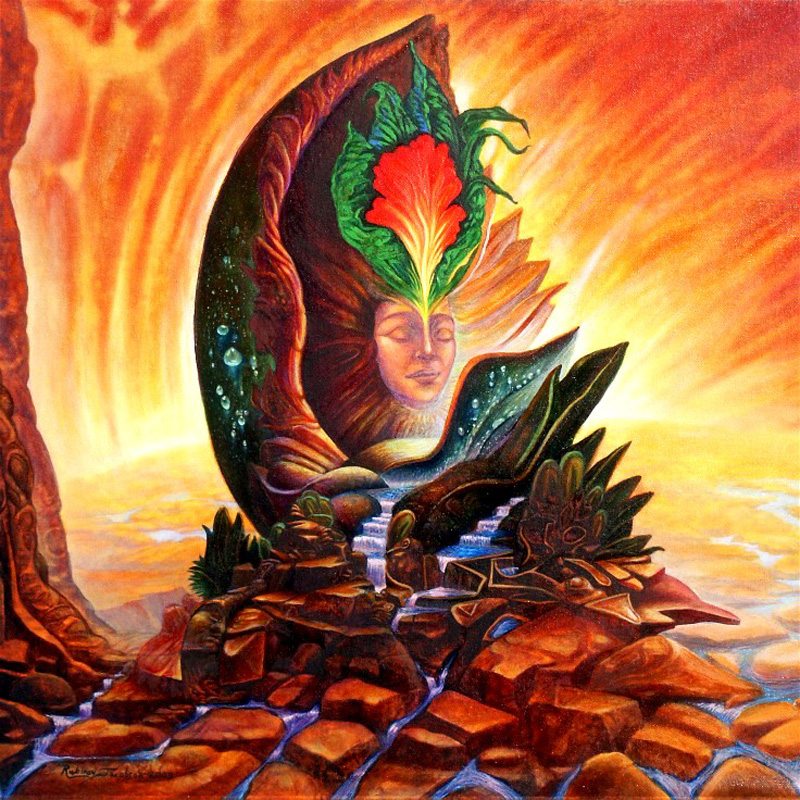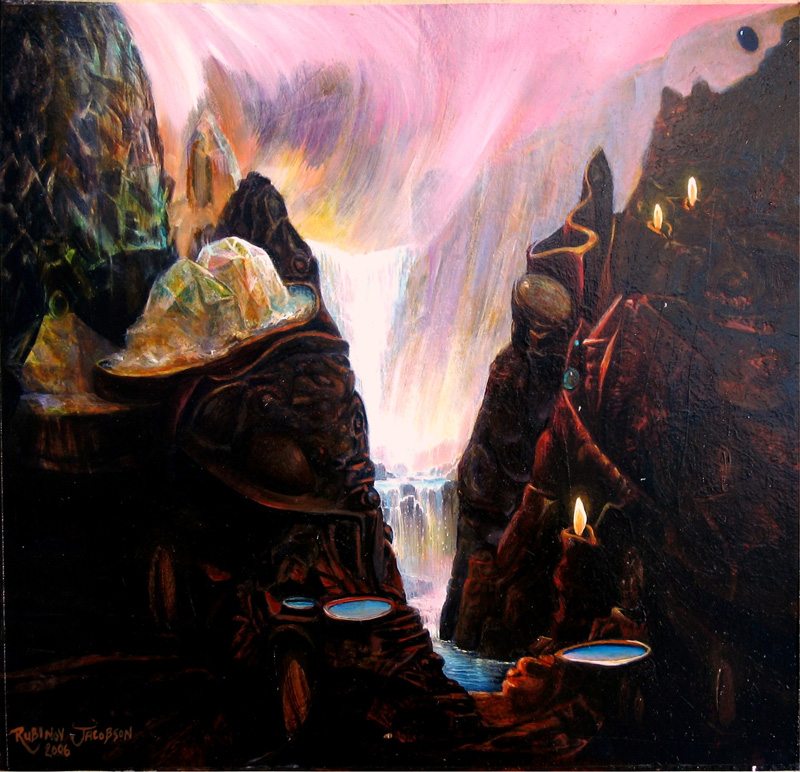Light in Painting: Jacobson’s Integral Innovations
“I have always been fascinated with the infinite ways that light can play out in a painting. For many years now, the focus of my painting has involved ‘Light’ in its myriad manifestations as matter. I do this in numerous forms and ways.”Philip Rubinov Jacobson
Light in Western painting has a history. And Philip Rubinov Jacobson is doing nothing less than revitalizing pictorial light for an emerging integral age.
Medieval picture light is exemplified by stained glass windows, sunlight shining through opaque glass, the depicted figures “emanating” as colored visible light, illumined glass and image co-substantial, a sensory reflection of and pointer upwards, beyond this world, towards God as invisible Light. Post-medieval painting, beginning with the Renaissance, differentiates the literal materials of the image from what is pictured, generating more transparent surfaces through which one looks into a deep perspective space that re-presents the sensory world. Objects are revealed by a virtual light-source posited either streaming into the picture from without or shown within the scene. The achievement of great artists, from Raphael, El Greco, and Caravaggio to Vermeer, Tiepolo, and Friedrich was to figure expanded states of luminous being into this re-presented world of natural light.
Beginning with Impressionism and taking off with subsequent artists like Van Gogh, Modernism deploys local color as self-illuminating radiance, appealing as it does to the eye alone within a differentiated and at times dissociated sensorium proper to the modern psyche. (This is the moment of coining the phrase “the visual arts.”) It is not so much being in its fullness which shines, but color restricted to the optical, often failing to achieve a sense of spiritual expanse (despite stated intentions) in lieu of formal-abstract concerns or personal expressiveness.
Certain strains of postmodern art take the Modernist approach in a new direction, as with Warhol’s Diamond Dust Shoes, work that in comparison to a Van Gogh is more like an x-ray devoid of life, a reproduction of a reproduction—sliding surfaces without depth: a disclosure of the postmodern aesthetic of alluring surface sheen that is all-pervasive today. The CGI and colored-lighting effects of CSI: Miami are the mass cultural version of what Warhol disclosed decades ago, but without his art’s potential critical edge. (One wonders too to what extent the style of the Wachowski brothers’ Speed Racer, in its intended appeal to children, is not at the same time a secret attempt at intervening, visually and critically, into this all-pervasive postmodern aesthetic of seductive surfaces).
Which brings us to Jacobson’s art.
Jacobson does nothing less than unite the diverging ascent (medieval) and descent (post-medieval) impulses of the Western painting tradition into a visionary panentheism where “’Light’ in its myriad manifestations [is disclosed] as matter.”
In The Mission gliding missionaries parade from an opening of white light in the sky that evokes a source light within the painting. More than natural light, this white light is a plenum, the “higher” ontological source of the variegated forms below. For all things and beings can be said to be refractions of this white light and constituted as self-radiating light-color, ranging from the transparency of the missionaries to the apparent solidity of buildings; and no longer within a dissociated modernist optics, but light-energy as the very substance of this three-dimensional world.
In Aquamarine Muse the twin appearance of a Goddess and a gem are aligned on the central vertical axis, frontal in presentation, symmetrically composed—an icon or “portrait” of the Light-Energy proper to this mineral. The beautiful Goddess forms display something of that postmodern sheen—but here with unmistakable depth and subtle dimensions, as if to instruct us of the latent spirituality inherent in the dominant visual look of our global culture.
In Fire Muse the complex brushwork and paint application—in some places heavy and thick, in others more thinly applied in semi-transparent layers—generates a miraculous light-being, such that the essence of the figure as fiery-rainbow light flows into the darker surround, the brushwork above the muse’s blazing head reverberating the texture and rhythm of flame—an alchemical transmutation of actual paint into light. And in Doorway a figure constructed of color-pleats is encased in a translucent crystalline sheath, this “clear” light associated with the blinding light of the doorway behind, the figure’s purpose mysterious and silent. The human forms in these paintings mark quantum leaps in the Western luminous imaginary.
Throughout his oeuvre Jacobson re-invents light in painting, empowering anew art’s capacity for spirited transmission.
Michael Schwartz
November 2009
From the Artist:
What I learn and feel, and what I artistically express all reflect an underlying spiritual quest. My work is concerned with the mysteries of life and the perennial questions that arise from such a pursuit. Art is a spiritual practice that casts aside the fallacies of dogma and tenet, expresses Goodness, Beauty and Truth and is never satisfied with anything substitute or counterfeit.
I would describe myself as an “creatuitive artist’, that is, I combine creativity and intuition in my search for spiritual revelation. Such an art marries Psyche and Techne in order to tap into universal form and a sacred language. Painting acts as a mirror reflecting the signs and symbols of Spirit. Spirit directs artistic practice in transcending our limited and frozen identities toward a more expansive experience of our self and infinite nature. This visual language serves the creative worker and respondents alike, on the spiritual journey. The mind becomes a microcosmic reflection of macrocosmic principles in the universal process of grand creation. The universe is constantly creating, sustaining and destroying forms. Stars are born, give light and warmth, nova and die. So it is with the Mind, constantly creating, maintaining and destroying thought-forms; mirroring the creative process of the Universe.
I have always been fascinated with the infinite ways that light can play out in a painting. For many years now, the focus of my painting has involved ‘Light’ in its myriad manifestations as matter. I do this in numerous forms and ways. One of these ways has been in exploring and expressing the essence of gems and minerals. They hold a fascination for me as forms of ‘solid light’. I had a transcendent experience of seeing and feeling the life-essence behind this crystalline kingdom in a semi-trance like state It was so fantastic and I have only just begun to paint the ‘grossest’ form of it as I slowly move toward expressing the essence of this ‘subtle’ experience.
I also find it challenging, technically, to paint such imagery. By contemplating on a mass of indefinite Light one can get only an intangible something, a slight form of the formless and auspicious body of the Divine. One of the infinitude of ways is in seeing that Light is being marshaled in a pattern of radiant rays. Such energetic patterns composing the spirit of matter eventually weave their way from the intangible to the tangible canvas; the thought clothe of an art of the soul. The Light consolidates, condensing out of the Whole, creating a microcosm of infinitely smaller wholes. In this way art can also be understood as aesthetic holons. Ordinary vision is nothing more than the physical encounter of the eye with the illusion of matter that strikes it. To live and dwell only in the state of ordinary vision is like walking around with snow on our heads, our imaginations frozen, our intuition and soul on ice. To the integral artist that has awakened to the Reality of the Spiritual Imagination behind the Illusion of Matter, the Invisible behind the Visible; life is not only arranged in the Basin of Space – but is married to Light and Love, the Daughter of the Eternal, the Son of the Infinite.
Philip Rubinov Jacobson
About Philip Rubinov Jacobson
Philip Rubinov Jacobson is an artist, writer, teacher, philosopher and traveler. An international and central figure in both the Fantastic and Visionary genres of art, he holds undergraduate and graduate degrees in Painting, Printmaking and Sculpture, with studies in Psychology, Philosophy and Comparative Religion. His paintings have been exhibited internationally in more than 90 exhibitions and his writings have been read worldwide. He is the author of Drinking Lightning: Art, Creativity and Transformation and the forthcoming Eyes of the Soul: Exploring Inspiration in Art, both with forewords by Ken Wilber.

